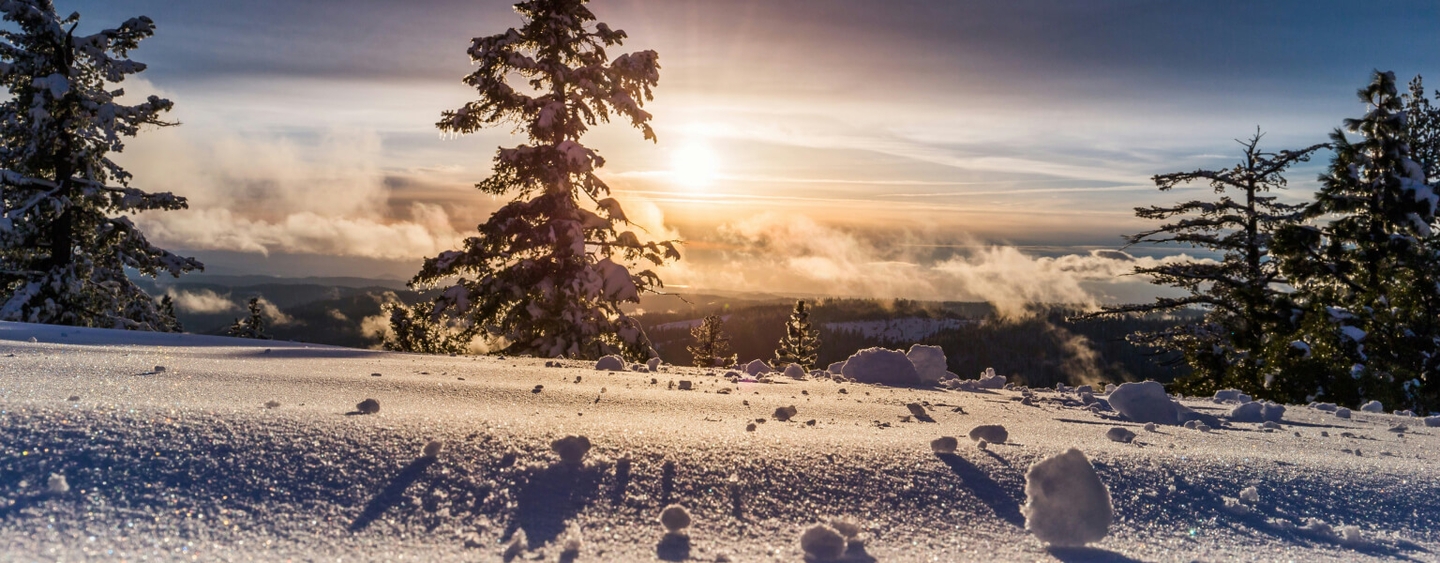How to winterize a house
5 min read
As a homeowner, when it comes to preparing for the cold temperatures, winterizing your plumbing to prevent pipes from freezing is a top priority in the fall. Learning how to properly winterize your home can help protect your home by preventing water damage from frozen, burst pipes. You'll find the steps to winterize your pipes whether you live in the home throughout the winter or leave it behind while traveling to warmer places. There are additional steps to prepare the rest of your house for winter.
Why is home winterization important?
Winterizing your home is not just about keeping the cold out; it's another item on your fall home maintenance checklist that will help keep your property in good shape and minimize the risk of damage. Here are a few reasons winterizing your home is important:
- Energy efficiency and cost savings - You'll be sealing off drafts, ensuring your home is better insulated, thus reducing the workload of your heating system which will use less energy and lower your energy bills.
- Prevent freeze damage - Freezing temperatures can lead to frozen pipes, which may burst and cause water damage. Insulating your pipes and sealing openings can thwart potential disasters.
- Environmental impact - Your heating system consumes more energy when it's working inefficiently to heat a drafty house and creates increased carbon emissions.
Home winterization checklist
The following checklist includes some areas to address when winterizing your home:
- Roof and gutters: Inspect your roof for missing or damaged shingles and replace them. Clear out the gutters and ensure they are in good shape to prevent ice dams that can damage gutters and roof shingles. Ice dams can lead to water damage and colder air in your home. Learn about how gutters are covered by home insurance.
- Insulation: If you have an attic, or crawlspace, insulating the area works hand-in-hand with the gutters to help prevent ice dams. Also, since warm air rises, having a well-insulated attic floor helps warm your living spaces.
- Windows and doors: Check for drafts and use caulk and weatherstripping to seal them, which helps keep your home warm. Consider installing storm windows and doors to improve insulation.
- Heating system maintenance: Have a technician inspect and service your furnace or HVAC system to ensure it's working efficiently.
- Thermostat: Ensuring you set your thermostat warm enough also helps your home during winter weather. Programmable thermostats can help manage heating costs more efficiently.
- Fireplace: If you have a fireplace, get a chimney inspection and cleaning to prevent chimney fires and ensure that it's drafting properly.
- Ceiling fans: Reverse the direction of ceiling fans to circulate warm air that rises to the ceiling back down to the living space.
- Ventilation: Inspect exhaust vents to ensure they are clear of debris and working properly to prevent moisture buildup in the house.
- Smoke and carbon monoxide detectors: Check your smoke detectors and carbon monoxide detectors to ensure they are functioning.
- Tree trimming: Trim the large branches on trees close to your home to help prevent damage during an ice storm.
- Winterize your swimming pool: There are several steps that you can take to prepare your pool for the cold weather.
- Winterize your boat: If you have a boat, there are steps you can take to winterize your boat to protect it from extreme temperatures.
How to winterize pipes and house plumbing
It’s a good idea to be prepared in the event a pipe freezes or bursts. Locate the main water shut-off valve for your home and learn how to turn it off should you need to. Follow these steps to help your pipes stay healthy this winter:
- Insulate pipes: Insulating pipes is a DIY project a handy homeowner can tackle. Insulate all your pipes, especially the ones next to exterior walls and pipes in unheated locations like garages. You can use pipe sleeves or UL-listed heat tape and cables. Even newspaper and duct tape can help in a pinch. Keep garage doors closed as often as possible if it contains unheated pipes.
- Open cabinets containing exposed pipes: This lets pipes stay warmer by exposing them to the warmer air in the house. Be sure to secure anything poisonous to children or pets.
- Set faucets to drip: You wouldn't necessarily do this all the time, but it's a good idea during cold snaps to help keep water moving within the pipes. Moving water is less likely to freeze than standing water.
- Disconnect the hoses: Take hoses off any faucet fixtures if they're outside. Drain the hoses so they don't burst from standing water trapped inside.
- Don't lower the heat at night: Another step you may not want to do all the time, but it's advisable during especially cold weather.
- Install a TPR valve: InterNACHI, recommends installing a temperature/pressure-relief (TPR) valve, a safety device you can install on water heaters and furnaces. A TPR will activate if the water temperature or pressure exceeds the safe levels of the appliance. It will also protect your plumbing from the pressure from freezing that can lead to bursting.
What to do if you were unable to prevent pipes from freezing
If you've winterized your plumbing and your pipes froze anyway, your safest bet might be to leave the faucet turned on and call a plumber. If a pipe has cracked, turn off your home's water supply at the main shut-off valve and call a plumber. Turn on the faucets, too — even though there's no water supply, opening the faucets lets the warmer house air into the system to help thaw the pipes over time. Learn about how home insurance may cover plumbing damage .
Additional steps to winterize a vacant or unheated home
- Turn off the water supply to the house and exterior faucets and
- Disconnect the garden hose
- Turn off the water heater and drain it
- Drain water supply lines and leave faucets and valves open
- Blow out the water supply lines using an air compressor
- Flush the toilets until no more water comes up
- Pour non-toxic RV antifreeze into the toilets and drains that have been blown clear of water
- Drain and disconnect appliances that use water
- Turn off the electricity to the building
- Leave signs nearby sinks and toilets that say, "Winterized. Do not use plumbing"



